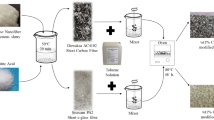The liquid extrusion infiltration technique was used to fabricate two 2D CF/Al composites with T700 and T300 carbon fiber fabrics. Microstructure examination demonstrated their different macroscopic infiltration morphology, but the infiltration effect was perfect. The coefficient of thermal expansion of those two composites was shown to be much lower than that of the matrix alloy below 673 K (400°C). At a temperature higher than 673 K (400°C), this value for a T300 CF/Al composite was equivalent to only 22.6%, which was much smaller than that of the matrix alloy. The ultimate tensile strength of T700 CF/Al and T300 CF/Al composites was improved by factors of 2.007 and 2.467 than that of the matrix alloy, respectively. The differences in the thermal expansion coefficient and ultimate tensile strength stem from carbon fiber volume fractions and its grades of the two different fabrics. The fracture morphology of tensile specimens was also influenced by the fiber orientation in fabrics. A T300 CF/Al composite displayed better tensile and thermal expansion properties than a T700 CF/Al composite, which were prepared and designed for further industrial applications.




Similar content being viewed by others
References
Y. X. Zhou, Y. Wang, S. Jeelani, and Y. M. Xia, “Experimental study on tensile behavior of carbon fiber and carbon fiber reinforced aluminum at different strain rate,” Appl. Compos. Mater., 14, No. 1, 17–31 (2007).
Q. R. Yang, J. X. Liu, S. K. Li, et al., “Fabrication and mechanical properties of Cu-coated woven carbon fibers reinforced aluminum alloy composite,” Mater. Design, 57, 442–448 (2014).
Y. H. Zhang, G. H. Wu, G. Q. Chen, et al., “Microstructure and mechanical properties of 2D woven Gr/Al composite,” T. Nonferr. Metal. Soc. China, 16, 1509–1512 (2006).
L. H. Qi, Y. Q. Ma, J. M. Zhou, et al., “Effect of fiber orientation on mechanical properties of 2D-Cf/Al composites by liquid–solid extrusion following vacuum infiltration technique,” Mater. Sci. Eng. A, 625, 343–349 (2015).
Y. H. Zhang and G. H. Wu, “Interface and thermal expansion of carbon fiber reinforced aluminum matrix composites,” T. Nonferr. Metal. Soc., 20, No. 11, 2148–2151 (2010).
X. Wang, G. Q. Chen, W. S. Yang, et al., “Effect of Nd content on microstructure and mechanical properties of Grf/Al composite,” Mater. Sci. Eng. A, 528, 8212–8217 (2011).
H. G. Seong, H. F. Lopez, D. P. Robertson, and P. K. Rohatgi, “Interface structure in carbon and graphite fiber reinforced 2014 aluminum alloy processed with active fiber cooling,” Mater. Sci. Eng. A, 487, Nos. 1–2, 201–209 (2008).
Y. Q. Ma and L. H. Qi, “Effect of extrusion temperature on the microstructure and tensile property of 2D-Cf/Al composites by liquid extrusion infiltration,” Int. J. Adv. Manuf. Technol., 94, Nos. 1–4, 1349–1355 (2018).
L. H. Qi, L. Z. Su, J. M. Zhou, et al., “Infiltration characteristics of liquid AZ91D alloy into short carbon fiber preform,” J. Alloy. Compd., 527, 10–15 (2012).
Y. Q. Ma, L. H. Qi, T. Zhang, et al., “Study on defects of 2D-Cf/Al composite prepared by liquid-solid extrusion following vacuum infiltration technique,” Int. J. Adv. Manuf. Technol., 88, Nos. 1–4, 89–96 (2017).
J. Xue, W. X. Wang, J. Z. Zhang, et al., “Experimental and numerical study on the tensile behaviour of UACS/Al fibre metal laminate,” Appl. Compos. Mater., 22, No. 5, 489–505 (2015).
N. Barekar, S. Tzamtzis, B. K. Dhindaw, et al., “Processing of aluminum-graphite particulate metal matrix composites by advanced shear technology,” J. Mater. Eng. Perform., 18, No. 9, 1230–1240 (2009).
Y. Q. Ma, L. H. Qi, W. Q. Zheng, et al., “Effect of specific pressure on fabrication of 2D-Cf/Al composite by pressure infiltration technique,” T. Nonferr. Metal. Soc., 23, No. 7, 1915–1921 (2013).
M. H. Song, J. Song, G. Q. Chen, et al., “Dimensional stability of 2D Cf/Mg–2.0Re–0.2Zr composites,” Acta. Metall. Sin., 45, No. 1, 119–123 (2009).
M. H. Song, G. H. Wu, G. Q. Chen, and W. S. Yang, “Thermal expansion and dimensional stability of unidirectional and orthogonal fabric M40/AZ91D composites,” T. Nonferr. Metal. Soc., 20, No. 1, 47–53 (2010).
A. Mertens, H. M. Montrieux, J. Halleux, et al., “Processing of carbon fibers reinforced Mg matrix composites via pre-infiltration with Al,” J. Mater. Eng. Perform., 21, No. 5, 701–706 (2012).
J. Khosravi, M. K. B. Givi, M. Barmouz, and A. Rahi, “Microstructural, mechanical, and thermophysical characterization of Cu/WC composite layers fabricated via friction stir processing,” Int. J. Adv. Manuf. Technol., 74, Nos. 5–8, 1087–1096 (2014).
W. F. Xu, J. H. Liu, D. L. Chen, and G. H. Luan, “Low-cycle fatigue of a friction stir welded 2219-T62 aluminum alloy at different welding parameters and cooling conditions,” Int. J. Adv. Manuf. Technol., 74, Nos. 1–4, 209–218 (2014).
Acknowledgment
The author is grateful for the financial support of this study from the National Natural Science Foundation of China (No. 51705389), Fundamental Research Funds for the Central Universities (No. XJS16071, JBX170411), the Project supported by Natural Science Basic Research Plan in Shaanxi Province of China (Program No. 2018JQ5013), Project funded by China Postdoctoral Science Foundation (No. 2017M613062), Fundamental Research Funds for the Central Universities (No. JBF180402), and National Natural Science Foundation of China (No. 11702202).
Author information
Authors and Affiliations
Corresponding author
Additional information
Translated from Problemy Prochnosti, No. 4, pp. 100 – 106, July – August, 2019.
Rights and permissions
About this article
Cite this article
Ma, Y.Q. Tensile Fracture Behavior of Carbon Fiber/Al Composites Produced by the Liquid Extrusion Infiltration Technique. Strength Mater 51, 587–592 (2019). https://doi.org/10.1007/s11223-019-00104-6
Received:
Published:
Issue Date:
DOI: https://doi.org/10.1007/s11223-019-00104-6




